On the outskirts of Roskilde, about 30 kilometers from Denmark’s capital of Copenhagen, lies a small, but significant district called Musicon. Sit on a bench in Musicon, and you’ll likely be sitting on slabs of concrete salvaged and repurposed from a demolition site nearby. Or bring your kids to the skatepark, and they’ll be riding their scooters on concrete that used to be a basin and canals for collection of rainwater.
Musicon was founded in 2007 on the premise that the old concrete factory that occupied the site should not be demolished, but rather become the foundation for the new district’s development.
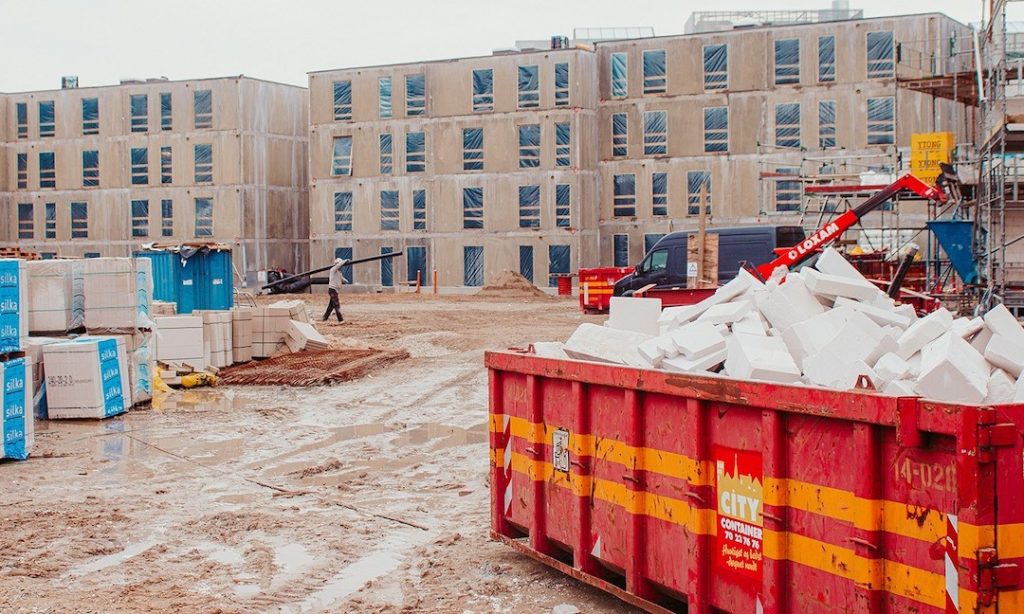
This meant that new construction projects would have to reimagine the old factory buildings in creative ways to create structures for living and working. Buildings that couldn’t be preserved were instead “selectively demolished,” meaning that demolition companies tore down old buildings in a way that ensured as many resources as possible were salvaged and recycled.
This is one example of what is called a circular economy. To become fully circular means to avoid as much waste as possible, and to preserve as much value in what does go to waste. City planners have been cozying up to the idea of circularity in recent years, typically with the hope of combating climate change and resource scarcity, and many have begun embracing the approach.
It was this founding principle that made Musicon an obvious candidate for an experiment called CityLoops, says Thomas Budde Christensen, associate professor in circular economies at Roskilde University, a CityLoops partner that helped develop the project. Seven European cities are taking part in the CityLoops experiment, which is funded by the EU’s Horizon 2020 program with a sum of just over $12 million, and aims to create sustainable city planning solutions based on the premise of circular economy. CityLoops is expected to run through 2023.
“We’ve chosen to focus on the construction sector [in CityLoops] because it is—in the world and in Denmark—one of the most resource-consuming and waste-producing industries,” Christensen says. “Construction waste makes out a huge chunk of all our waste, and there’s a huge volume of materials there. That waste could be used more responsibly, and in a way where we save as much energy and as many resources as possible.”
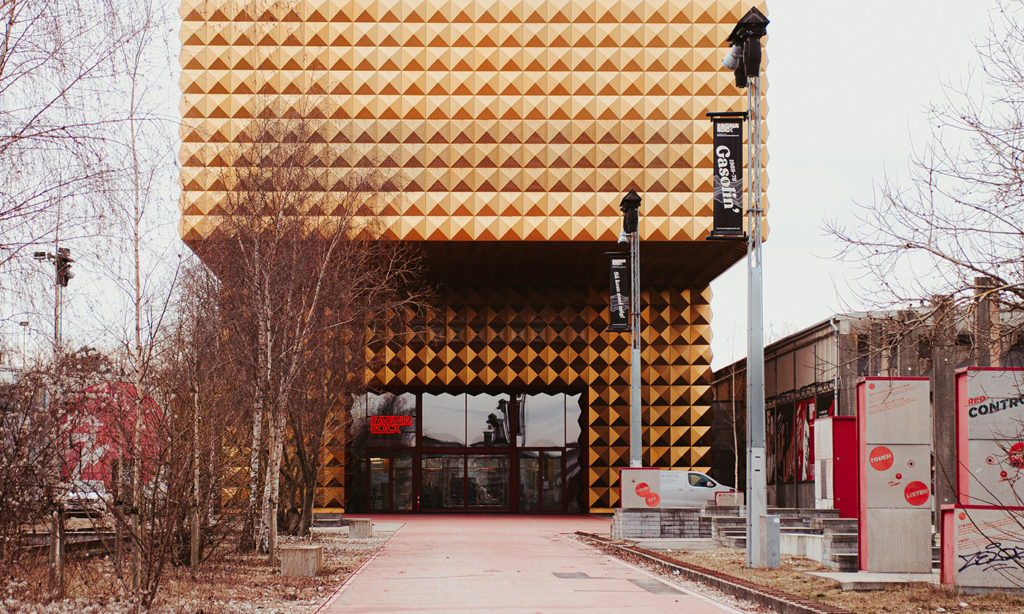
CityLoops cities each have certain focus areas. In Seville, Spain, the project is focused on minimizing water waste and promoting better use of biowaste. In Porto, Portugal, the city is trying to reduce food waste by creating models by promoting food donations and simplying the process for local businesses and social institutions. Apeldoorn in the Netherlands is experimenting with creating a “circular street” as part of a larger renovation project: by creating a pedestrian street with benches, parking lots, green spaces, and more using recycled materials from the area.
In Høje Taastrup, another municipality in Denmark, the city is developing a decision-making framework in planning to make the reuse and recycling of materials more practical.
“Part of a neighborhood was demolished as part of an urban renewal initiative, and the municipality is fighting to have as much of the concrete as possible from the demolition recycled in the development of Høje Taastrup C, which is a large urban development project,” says Line Bech, CityLoops project lead at Gate 21, a partner organization that works to promote green transition in Greater Copenhagen.
The CityLoops experiments have led to the development of dozens of tools, including manuals and guides for the use of recycled materials, and 3D scans of construction zones used to map resources. The hope is that cities and construction companies who are just starting out with circular construction will use the tools and find the process easy and approachable.
To do this, Klaus Kellermann, who leads the CityLoops project in the Roskilde Municipality government, has tried to make the process more “satisfying” and “transparent” for contractors, walking them through the entire process and accepting most of the risks associated with using recycled materials in construction. One of the biggest projects within the scope of CityLoops in Musicon is a parking garage, designed to not only house cars but also a parkour course, a rooftop vegetable garden, and more. Its construction is incorporating recycled materials from elsewhere in Musicon, especially concrete.
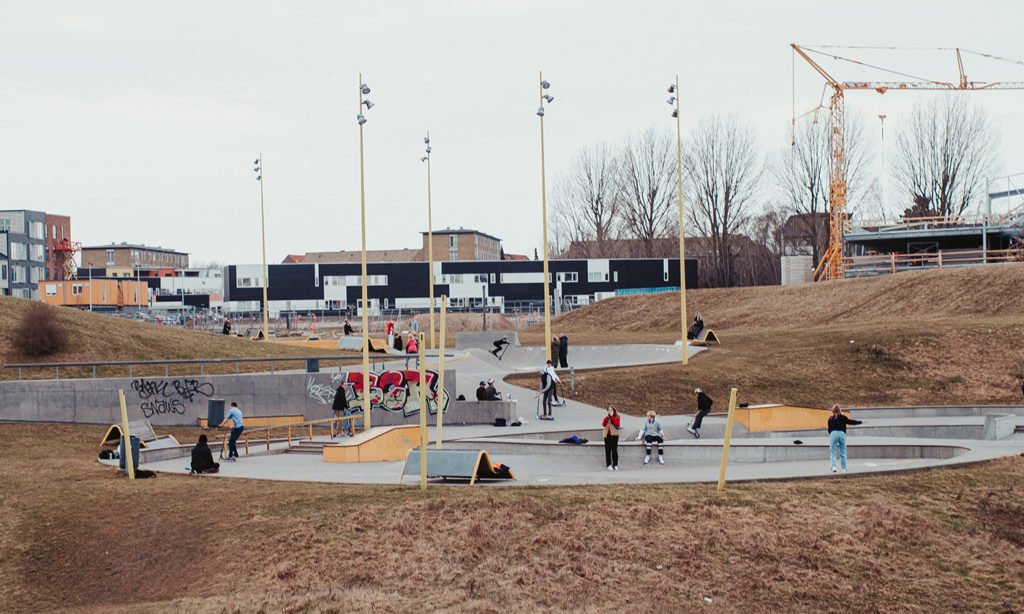
“As expected, we found some stuff in the ground that would have to be removed at an extra cost,” Kellerman says. “Instead of saying, ‘All right, dig it up and drive it away,’ I told [the contractor] to pile it up just next to the construction zone. Then I hired someone to crush it, I got it sorted, and then he could just pour it right back into the pit, or use it in the foundation.”
“This made the contractor’s work incredibly practical,” Kellermann says. “The costs were limited, and we’ve calculated that we saved hundreds of thousands of kroner. It’s an example that if we stop doing things the way we usually do, there is potential for all parties involved to make it quicker and more effective, and cheaper for the developers.”
Banks and Marketplaces
In several participant cities, including in Musicon, the circular economy takes the form of “banks” or “marketplaces,” digital and physical, where salvaged materials are stored and offered up for use in other projects in the area, including anything from a birdhouse to an apartment block. They are essentially flea markets for construction waste where residents, authorities, and contractors alike can engage in the circular economy.
“These ‘resource lots’ are, in Musicon, themselves made from recycled materials from within the municipality,” says Kellermann. The marketplaces are meant as experiments with creating efficient markets for recycled construction waste—one of the biggest challenges to implementing circular economy in society at large.
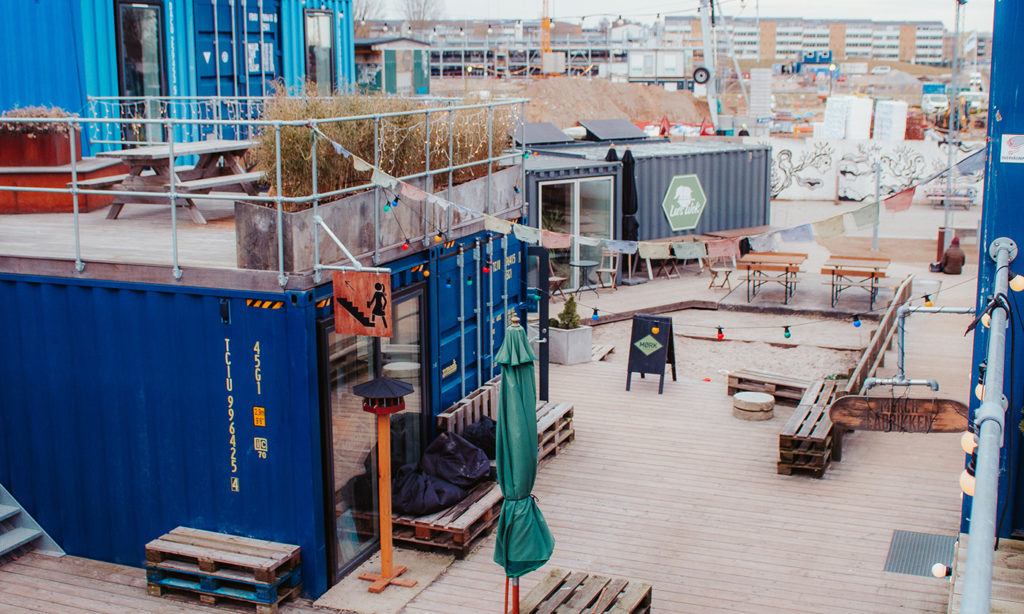
“Today, we actually recycle most construction waste, but much of it is driven away and crushed and then dumped under roads,” says Pernille Kern, project leader for CityLoops partner Region Hovedstaden, the administrative region that includes Copenhagen. “And that’s where that journey ends.”
“We want to examine if there is, for example, concrete we can crush and reuse,” she adds. “Or can we take out the windows and put them into new houses?”
The capital region entered the CityLoops project as a partner after a report that found that the region’s natural gravel deposits were emptying fast—even as demand continues to rise. If nothing changed, Region Hovedstaden expected to run out of gravel by 2027.
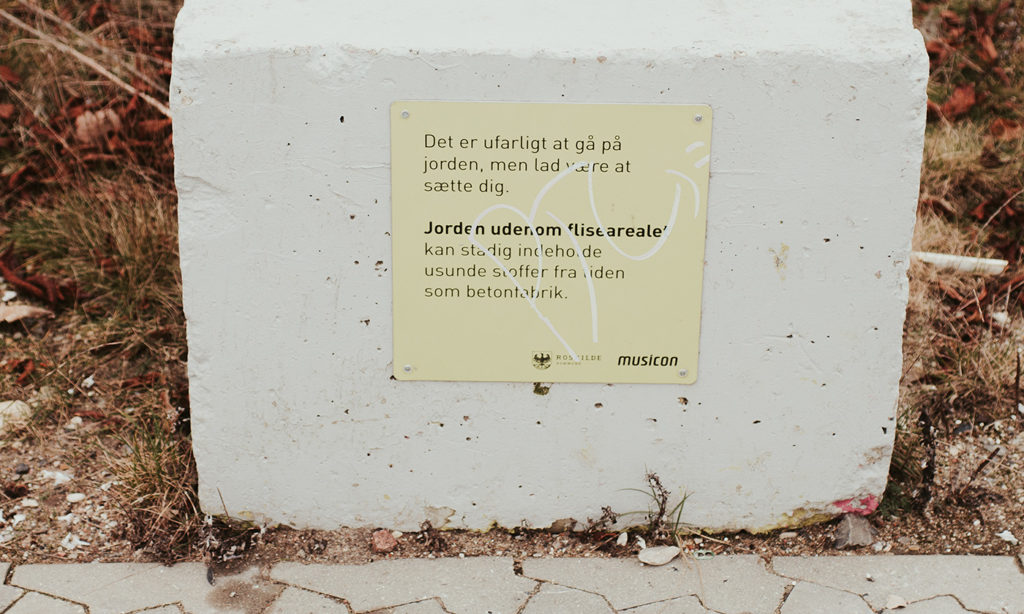
A slab with a sign that reads: “It is not dangerous to walk on the ground, but don’t sit down. The dirt around the tiled area can still contain unhealthy substances from the time as a concrete factory.” Musicon, Roskilde, Denmark. Photo by Sebastian Skov Andersen.
But property owners also share in the benefits of the new circular economy. One analysis of 16 case studies representing different types of construction concluded, “it is more profitable for the building owner to renovate, both when it comes to economy and when it comes to CO2 emissions.”
In 2018, the United States generated about 600 million tons of construction and demolition waste, of which more than 500 million tons comprised types of concrete, according to the Environmental Protection Agency. In all, 52% of the material was used in aggregate, which is often used in foundations, roads, or railroads, and 24% as landfill.
Getting Contractors On Board
The key to getting contractors to adopt circular practices is to put it on paper: require contractors in public procurements to work circularly, to maximize transparency, and to accommodate risks associated with using repurposed materials.
“We have made it clear for potential business partners that they need to be circular,” says Tor Gausemel Kristensen, the CityLoops project leader in Bodø Municipality in northern Norway. “That they need to think in terms of prevention of waste creation. So we set up some demands for them: If you’re going to plan a new city for us, you need to reuse the things that are available here, and build with emission-free machinery,” he said. “They want us to be their customer, but we are a customer with demands.”
In Bodø, the project’s demonstration site is a soon-to-be-disbanded military airport. The airport had been set to be demolished to make room for a new civilian airport and further expansion of the city. Instead, the airport became a CityLoops experiment, led by Kristensen and his team.

Now, instead of demolition, the city plans to turn parts of the old airport into a new city district, and transform another part into a new civil airport where the old one’s rubble would have been. That means, for example, turning old hangars into community buildings and housing, and repurposing an old runway to become the main road of the new district.
There are even plans to transform one hangar into a concert area, and another into a facility for immigrants. “Anything that can make the structure worth more than it was before,” says Kristensen.
The public sector is an important customer for construction companies in Norway, with public procurements constituting about 16% of the country’s GDP. “This means that we’re changing how businesses practice with the power of public procurement,” says Kristensen. “We’ve seen plenty of examples where such demands have resulted in innovation in private companies, explorations of circular ways of making business, and organizational changes.”
“If we as a public customer did not take this responsibility, contractors would act less circular because the linear economic way of doing things might often be less expensive in the short term.”
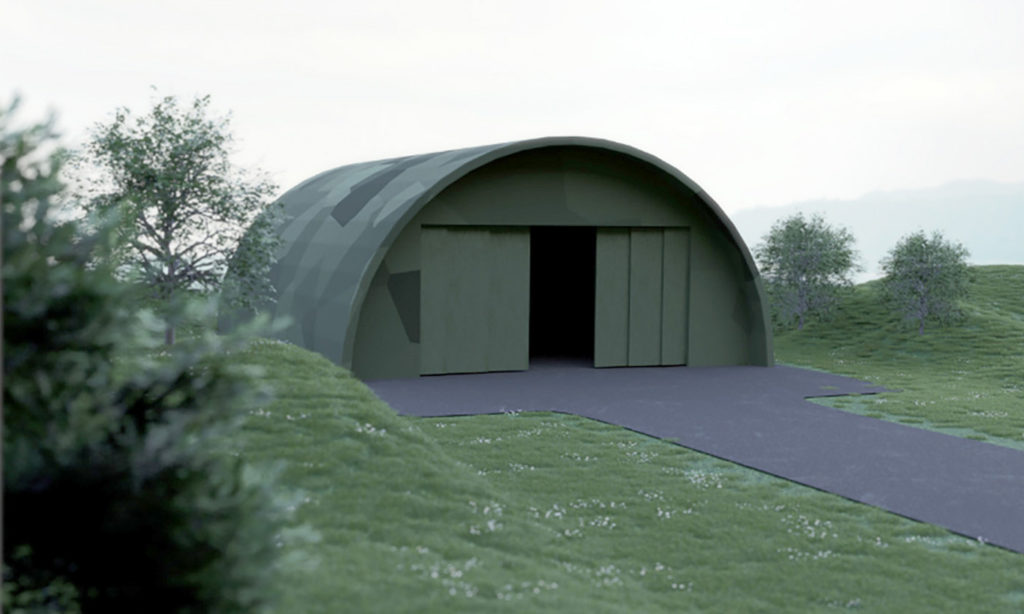
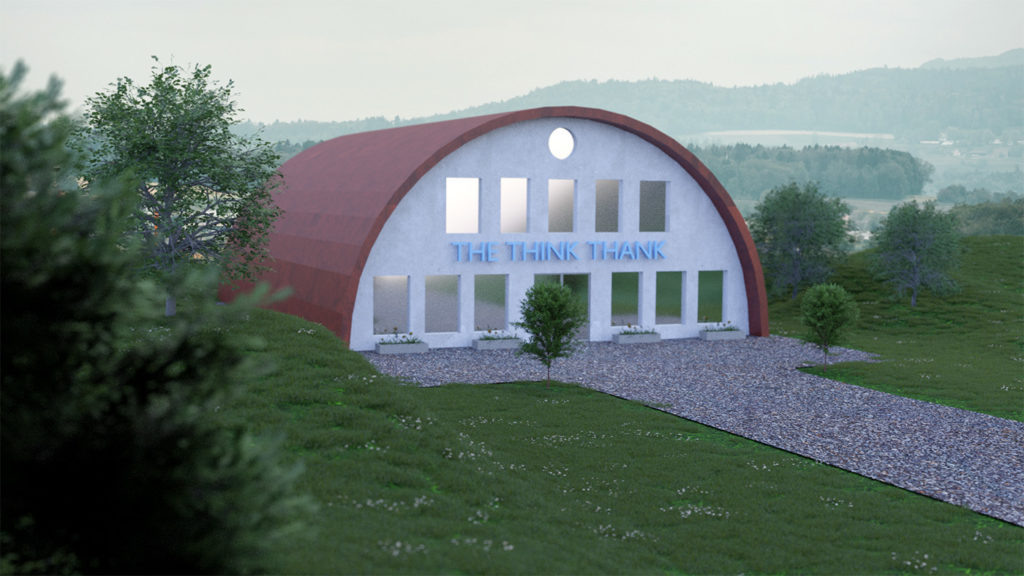
In the view of Kimmo Haapea, development manager for CityLoops in Mikkeli, Finland, an important part of the CityLoops project is to show that circularity is possible and, importantly, profitable.
“The main issue here is that we must have an effect on the way people think, and on how they act,” he says. “The most important indicator is the involvement and interest of stakeholders. If we don’t have any effect on that issue: Well, nice experiment, but not very good results.”
In Mikkeli, the goal is to find new, circular business opportunities. One such model that can arise from this is brick sorting: If a market for recycled bricks emerges, Haapea hopes some entrepreneur would jump at the opportunity to start a brick sorting business. Or that someone would figure out a quick method to remove old nails from timber and start selling that as a service, and so on.
If adopted in other places, the CityLoops experiments can have a profound effect on the sustainability of city planning on a grander scale. “From CityLoops, the objective is to allow those solutions that are being piloted to be replicated in other parts of Europe,” says Simon Clement, CityLoops project coordinator at ICLEI in Europe, a global membership organization of local governments that is responsible for finding replication cities. To do this, they’re creating “replication packages” that outline step-by-step how to implement circularity.
“A lot of what we’re talking about in terms of circularity requires a new skill set, a new set of technical expertise, and potentially the implementation of rather complicated systems processes,” Clement says. “So I think what’s critical here is facilitating this exchange of best practice exchange of knowledge, capacity building as well at the local level.”
Republished from YES! Magazine










